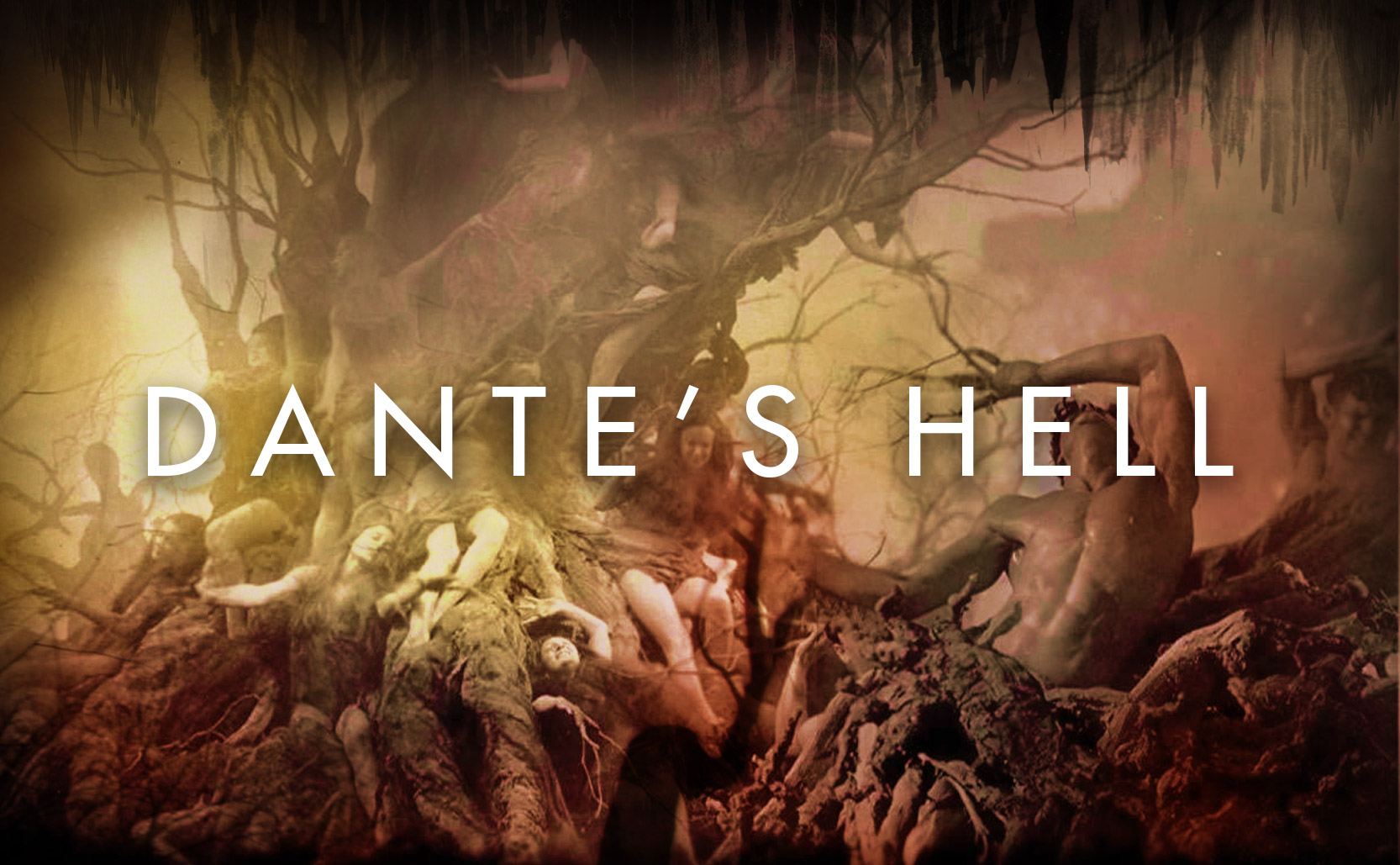Dante’s Hell
Dante’s fictional ideas of Hell are largely responsible for what most people think of as Hell.
Completed in 1320, the Divine Comedy is a long narrative poem by Italian Dante Alighieri. It is divided up into three sections:
- Inferno / Hell
- Purgatorio / Purgatory
- Paradiso / Paradise
Making himself the protagonist, the Divine Comedy tells the story of Dante’s journey to the underworld (Hell) and his eventual ascent to paradise (Heaven). It’s the first installment of this story, Inferno, that most people are familiar with. Inferno follows Dante down through nine very organized levels of Hell where each level down is for more terrible sinners. In the lowest level of Hell we find the devil along with the very worst sinners (those guilty of treachery).
What is Hell?
The Bible is fairly silent in regards to describing Hell. The specific word “Hell” is nowhere in the Bible. As far as a place in the afterlife full of punishment & suffering, the Old Testament doesn’t have one. The Old Testament has Sheol but everyone goes there – the good and the bad. It isn’t until the New Testament that a place of damnation is established with a few sketchy details. When someone dies, if they were righteous their name is in the book of life and they get eternal reward in Heaven. Those who don’t make the cut get a one-way trip to suffering city. While not given a name we’re told that this place has an unceasing fiery lake, that there is gnashing of teeth, and eternal suffering. There aren’t many more details than that. Enter, Dante’s Inferno.

Pop culture Hell
Dante’s Inferno creatively fills in the blanks left by the scant Hellish details of the Bible. For starters, Dante puts Hell underground (which is never specified in the Bible). The idea that there are different kinds of punishments for different kinds of sins is also invented by Dante. Similarly, the idea that there are different levels of Hell, each more awful than the previous, is also his literary creation. Interestingly Buddhism has places in the afterlife for punishment that are a lot closer to Dante’s idea of Hell than anything Christianity has ever created.
In the Inferno’s ninth and lowest level of Hell Dante finds Satan, but the Bible never says Satan is in Hell. Similar to the idea of Hell, Satan isn’t created/introduced until the New Testament. Satan’s origin story is convoluted with lots of retconning, but one way or another Satan is cast out of Heaven and sent down to Earth where he must live until the second coming of Jesus. Only on Judgement Day will he be cast down into what we now call Hell as a final punishment. Until then Satan is presumably wandering the Earth, causing trouble, but he is certainly not ruling Hell as we tend to think of him. Further, Dante depicts Satan as a giant monstrous beast with 3 faces and large bat like wings. It makes for a scarier story, but none of it is in the Bible. Of course if Satan could have at one point been a beautiful fallen angel, but also have potentially been a serpent, maybe he could also turn into a monster. The Bible is silent on the potential shape-shifting super powers of Satan.

Ultimately, when we think of Satan ruling over the administration of various punishments in a stalactite & stalagmite cavernous underground Hell we are thinking of the influence of Dante’s Inferno. None of this is in the Bible. After hundreds of years and untold number of other works of fiction, what we think of as Hell is more influenced by popular culture than the Bible. Add to this that most people have never read the Bible, and it’s easy to see how Dante has done more for Hell than scripture.
Added bonus: Dante wrote the Divine Comedy in the Florentine Tuscan dialect of Italian instead of Latin (which would have been the literary language of the time). Because it was written in the language of the people, the Divine Comedy was more accessible to more people which only increased its popularity. This helped popularize the Florentine Tuscan dialect of Italian which eventually became the standard Italian language that we know today.


